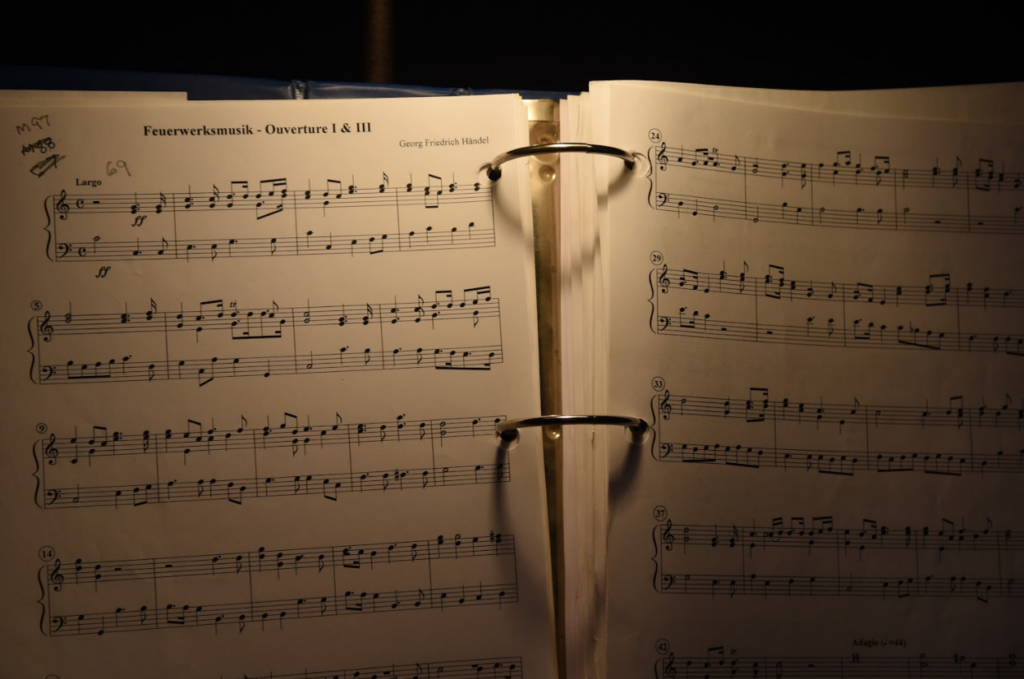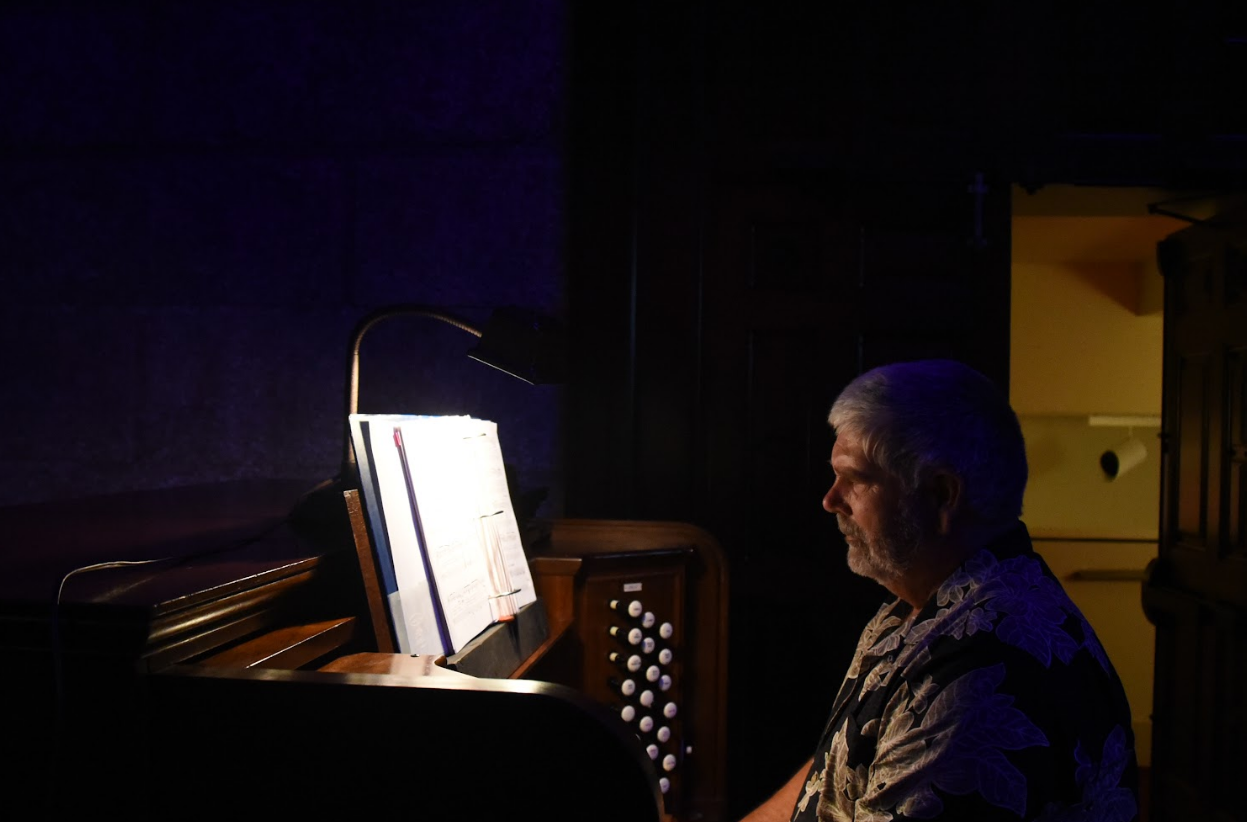Outside the large, open doors of the Dayton Art Institute’s (DAI) auditorium, instruments scream as though from another world. High-pitched trumpets and the whine of strings filter out into the foyer and its many connecting halls. It is an enticing invitation, one even the most fair-weather fan of music would find hard to resist.
For nearly a hundred years, visitors just like myself have been enchanted by the DAI’s pipe organ. Its voices create a window in time to the heydays of the 1920s when such complex instruments were all the rage.
Sitting on the bench, in full command of the great instrument, Matt Dierking looks as far from the roaring twenties as his bright Hawaiian shirt and relaxed demeanor suggests. Yet the volunteer organist shows what decades of experience sounds like, stroking and pedaling the works of George Frideric Handel and Claude Debussy into melodic life. Each carefully selected note rang as if to say: “Summer on the Ernest M. Pipe Skinner Organ is here at no extra charge!”

Dierking’s performances have attracted people for years. Like clockwork, he is always keen to volunteer to play the famed organ every first and third Sunday of every month. The former head of the Dayton Chapter of the American Guild of Organists has just what it takes to craft programs tailored to the season and audience. He proves that afternoon with ease.
“It is a symphonic organ made up of about 1400 pipes,” he says. “It was built in 1929 for the museum. Back then, it was hard to have an orchestra always present, live music was expensive. But once you put an organ it, it could be played all the time.”
“As a symphonic instrument, it has a lot of voices that mimic what would have in a symphony. There’s a really pretty clarinet, an English horn, and sassy things like tubas and trumpets,” he adds.
Dierking’s selection was chosen to sound like summer. Quiet moments, relaxing notes, even triumphant celebrations of the season- summer in its many expressions were on full display. Handel’s ‘Water Music’ and George Gershwin’s ‘Summertime’ are just a few of the classical pieces he played.
As explained by Dierking’s accompanying presentation, Skinner organs like the DAI’s were once hotly desired commodities in the US. Andrew Carnegie had one, which an organist played every morning to wake him up. The Rockefeller’s also had one built for their use. Given his success and fame, Ernest Skinner was a busy man, constructing instruments for homes and other prestigious structures around the US. His masterpiece at the DAI was titled ‘Opus 749, 1929’.
Popular hits from the big screen offered the organist a chance to show his audience just how versatile the organ can be. After multiple rounds of clapping and over a half dozen tunes, it was no wonder the instrument remains as popular today as it was back then.
“It’s the perfect balance of music, science, and technology,” Dierking said. “The sounds the casements can make, their power, it’s all just astounding.”
That afternoon, over a dozen visitors to the institute would certainly agree. Many more are bound to share Dierking’s love and enthusiasm for the instrument in the near future, as his efforts to share the extraordinary Skinner organ with the world continue.
Ismael David Mujahid.
Managing Editor.

